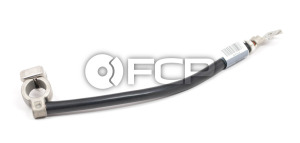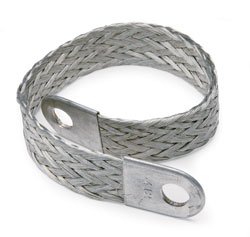Electrical problems can be extremely frustrating, especially if you have limited experience troubleshooting and chasing them. One way to save yourself a lot of time and trouble is to first verify that all of your vehicles' ground connections are clean, solid, and of low resistance. Practically all modern cars use a “negative ground” type electrical system, where the negative post of the battery is connected to a few strategic points - namely the engine block, and the cars' chassis. This allows electrical and electronic devices in the car to receive their power through a set of positive wires in the wiring harness, and to return that current through the chassis, engine block, or other items which are electrically continuous (connected) with the two. For instance, many cars have grounding points in the metal structure of the dash board. This metal structure is typically welded or bolted to the unibody of the car, and as such acts as a ground path for the powered devices to connect to the negative post on the battery. Because all of the electric and electronic devices on the car must connect to the ground, and because the grounding points are often neglected, this is a great place to start in troubleshooting electrical problems with your car. You will need a multimeter, preferably one with an auto-range function. A multimeter is about as important a tool as a ratchet to the serious mechanic, and equally important to know how to use. Even if your vehicle doesn't seem to have any electrical problems, it never hurts to check your grounds. Of course, you should always be careful when working with the electrical system, and exercise great caution if your vehicle has electronic engine management, or any type of onboard computer.
You should expect less than 1 ohm resistance
Generally, you will start with removing the battery. Once it is out of the way, take a good look at the negative battery cable. Especially in older vehicles, this cable will branch off very quickly and bolt directly to the frame or chassis at the most convenient place. The other branch of the negative battery cable will most likely go directly to a similar bolt arrangement on the engine itself. You can set your multimeter to read resistance, and test from the bolt itself to the surface of the battery post connection. I would also check at the eyelet of the cable, and at the metal in the immediate vicinity of the connection. In all cases, you should expect to read less than 1 Ω resistance (I would seek to be as close to 0.1 Ω as possible. If your resistances are greater than this, especially if they are MUCH greater than this (more than 5 Ω or so), I would unbolt the connection, wire brush both sides of the eyelet, wire brush the bolt, and very gently wire brush the metal surface that makes contact. Be sure to coat all of these contact surfaces with a thin film of electrical contact grease. This will both protect the metal from corrosion, and promote a strong electrical connection.
Functional grounds add features to your car
After you are done checking the main grounding connections, search all over the vehicle drivetrain for braided grounding straps. These straps will run from the engine or transmission to the chassis, typically, and should be tested and treated in the same way as previously mentioned. Once you are comfortable that all of your grounds have been fixed, you should do an indirect grounding test. Find an exposed metal spot on the engine- an intake manifold (if metal), the bracket that holds the alternator, or perhaps the head or block itself- as far away from a grounding strap as possible. You will check the resistance between that point and the battery terminal connector. It should be in the 0.5 Ω neighborhood. If it is substantially higher, double check all of your ground connections, and be sure that you haven't left any disconnected after cleaning. Once the system is all buttoned up, you can reconnect the battery, and see if your car has any new features! Often times, a poor ground will cause high load electrical components, such as sunroofs, power seats, or window heaters to function poorly or not at all. A good cleaning can cause some of these items to spring back to life.
Once, long ago, I was helping a friend troubleshoot a random shutdown on a pickup truck. We spent the better part of an afternoon pulling all of the grounding straps and the ground cable itself, after we found that the ground resistance was woefully out of spec. We thoroughly cleaned every contact point and used our contact grease wherever necessary. Much to our surprise, not only did the problem condition go away, but the instrument panel lights were substantially brighter than before! This truck was over 20 years old and had nearly 400,000 miles at the time. Just a little bit of work on those grounds made quite a difference.
 Dan Bullmore is a physicist and engineer from Houston, TX. Preferring the old to the new, Dan has owned many examples of Mercedes and Volvo vehicles and has devoted much of his time to maintaining and understanding them.
Dan Bullmore is a physicist and engineer from Houston, TX. Preferring the old to the new, Dan has owned many examples of Mercedes and Volvo vehicles and has devoted much of his time to maintaining and understanding them.













